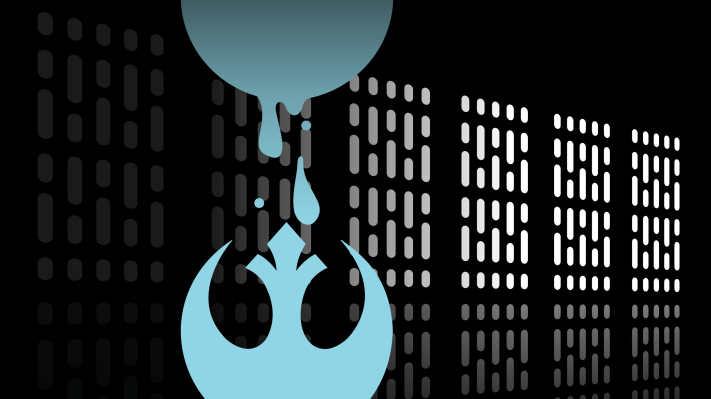2016 was the year hacktivists disrupted cyberspace like never before.
The December launch of the new movie Rogue One: A Star Wars Story was well-timed — epitomizing outsiders banding together to bring down powerful enemies against long odds to steal confidential plans. This plot is similar to hacktivist agendas over the past year.
Following 2015, when data breaches started to become much more personal, I believe that the top cyber trend in 2016 was hacktivism, with even state and local governments being targeted.
And offline, hacker activities were much more unsettling to the international status quo. With the mix of fake news, leaked insider information to the press and claims and counterclaims by public officials, the result was an undermining of news media and government source authority, credibility, trust and legitimacy.
“Hackers will hack” for a plethora of reasons, and plenty of black hats were, and still are, trying to make a buck or two via old-fashioned online robbery, extortion and stealing credentials from Yahoo and many others. Still, the top hacker impacts revolved around politics and wealthy people hiding money in offshore accounts being exposed in the Panama Papers — which some experts called history’s biggest data leak ever.
From Clinton campaign emails revealed by WikiLeaks to DDoS attacks against governments, banks and other corporations, the hacktivist corner of the Net never slept during the past year. Even the Mormon Church didn’t escape this trend — with a new online venue called MormonLeaks.com.
Hacking for a cause is set to explode into a complex set of state and local government challenges.
The sport of cricket was the source of hacktivism in India and Pakistan, with additional hacking of the rich and powerful by lesser-known hacktivists. The mainstream media also saw personal data about them released, which left many leaders feeling uncomfortable as more people became hackers who made their mark through digital disobedience.
Specifically, the uncovering of hidden information went into hyper-drive — with groups such as Anonymous, WikiLeaks and DC Leaks shaping the news and impacting global dialogue, while undermining trust in digitally stored information.
Defining hacktivism
What is hacktivism (also spelled “hactivism” by some)? Simply stated, it is the subversive use of computers and computer networks to promote a political or social agenda.
No doubt, some will say that many of these hacks were sponsored by major world powers, such as Russia. Foreign government involvement is likely the case; nevertheless, there is disagreement in the intelligence community over who was behind many of these hacks in 2016 and what their motives were.
Regardless of who all the players were, the unmistakable hacktivism trend is still the same. Hacking is no longer just for dollars, and the Georgetown Journal of International Affairs points out this trend has been growing for many years. Here’s an excerpt:
“Hacktivism emerged in the late 1980s at a time when hacking for fun and profit were becoming noticeable threats. Initially it took the form of computer viruses and worms that spread messages of protest. … By the mid-1990s, denial of service (DoS) attacks had been added to the hacktivist’s toolbox, usually taking the form of message or traffic floods. …”
New technologies gave protesters a convenient and powerful means to spread their messages and mobilize action globally. Also, technological innovations gave protesters the ability to employ hacking tools to conduct cyber operations analogous to street protests and sit-ins.
By 2008, hacking had become an undercurrent in American national elections. Nevertheless, 2016 was the year hacktivism exploded from primarily a topic for the information technology media and opinion columns to a feature of the daily news and public policy, governance integrity and national defense discourses in Congress.
Hacktivism is now challenging international affairs, not only because it transcends borders, but also because it has become an instrument of national power.
Why compare “hackers with a cause” to Rogue One: A Star Wars Story?
Yes, the movie Rogue One: A Star Wars Story is science fiction. However, the similarity lies in the way hackers stole center stage from powerful establishment organizations that were overconfident in 2016:
“In a time of conflict, a group of unlikely heroes band together on a mission to steal the plans to the Death Star, the Empire’s ultimate weapon of destruction. This key event in the Star Wars timeline brings together ordinary people who choose to do extraordinary things, and, in doing so, become part of something greater than themselves.”
This could very well describe the global hacktivists’ view of the world in 2016.
Note: The “Death Star plans” are synonymous with any data, plan, information or emails that hackers deem relevant to achieving their wider cause. If you don’t like science fiction, our new world of global hacktivism is depicted in the TV Show Mr. Robot.
Regardless of whether you can relate to any of these cyber analogies, hacking for a cause is set to explode into a complex set of state and local government challenges.
It certainly appears that we have now entered a new period where “hackers with a cause” will shape the global dialog on everything from international relations to financial reporting to local politics in the same ways that protesters shaped such topics as civil rights and climate change in the past.
In a sentence: Hacktivism is becoming the new, digital “March on Washington, D.C.”
